15 modern brick house ideas: All the inspiration you need
After modern brick house ideas for your project? Despite being one of the more traditional construction materials for homes, there is no reason why brick should be boring — as these great examples show
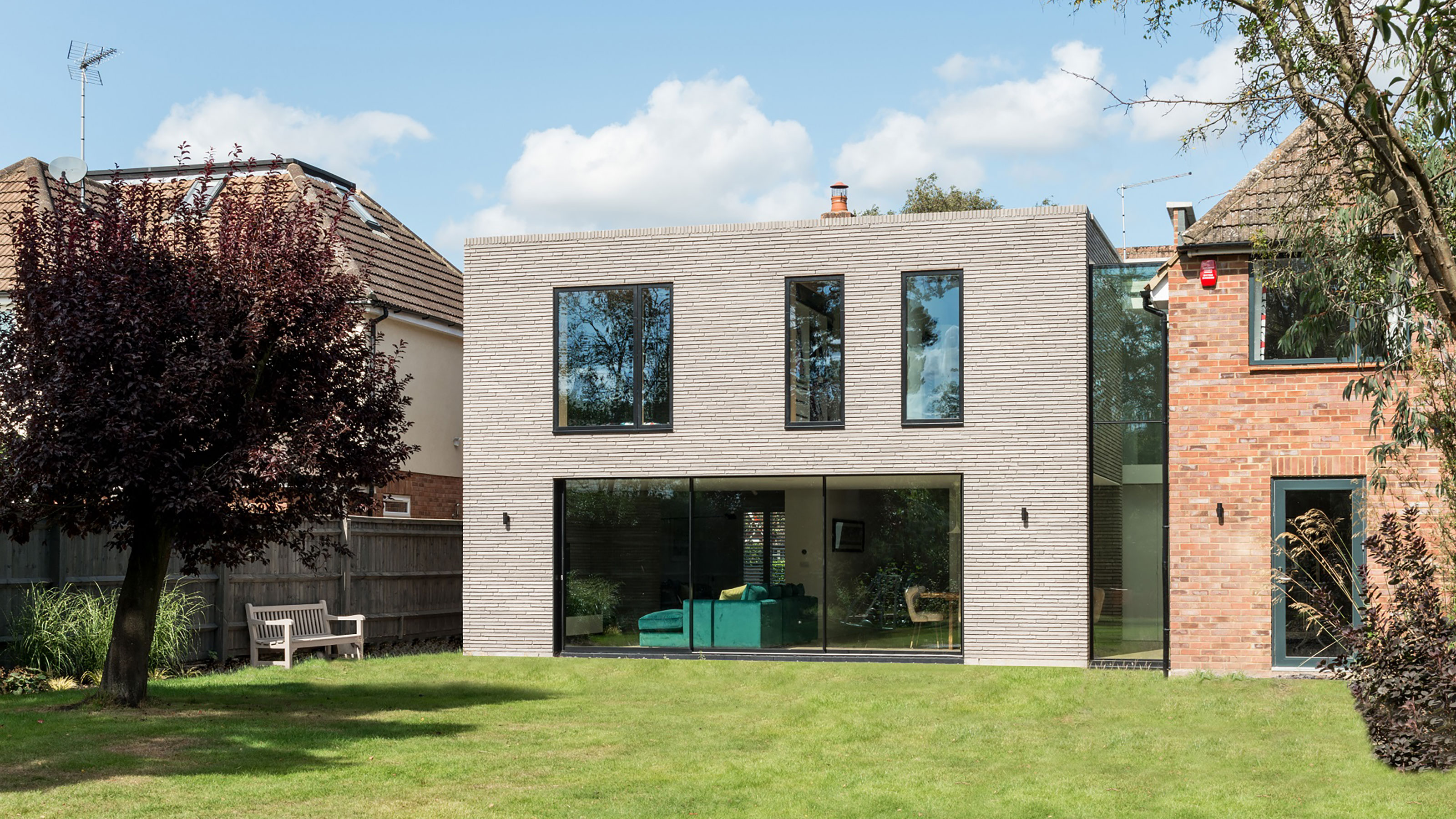
The key to getting modern brick house ideas spot on is to get creative while still working within typical local parameters — taking traditional styles and adding interesting bonds or colour choices into the mix.
With so many different types of brick available, selecting the right one for your self build or extension project can seem a pretty daunting task. While listed buildings or projects in designated areas might be more restricted when it comes to the options, those working on extension projects that fall within permitted development are often free to choose from a wide range of colours, shapes and patterns to really pack a visual punch or create drama — although it is perhaps wise to consult with your neighbours if you have your heart set on something really radical.
Even if you find that your local planning department want a say in your brick choices, working within guidelines and opening up a conversation can lead to beautiful results.
What are modern brick house ideas?
Just how do modern bricks differ from traditional bricks? This tends to have more to do with the style and how they are formed rather than the material they are made from.
Clay bricks, for example, can look very modern if you choose extruded or wire-cut as they have a nice, uniform smooth finish, while reclaimed and handmade clay bricks have a far more rustic, traditional look to them.
Colour too will play a large part in the look of a brick and the choice of shades is huge. From white to cream, yellow and bright reds, you can also choose from browns, greys and blue tones.
Then there is the bond in which the bricks are laid, as well as their shape. Stack bond, made up of rows of stretchers with each stretcher centred on the stretcher below it, looks very neat and modern. For something more unusual 3D effects can be created by laying bricks at various protruding angles, and a basketweave pattern (a little like herringbone) can look very striking too.
1. Take inspiration from your surroundings
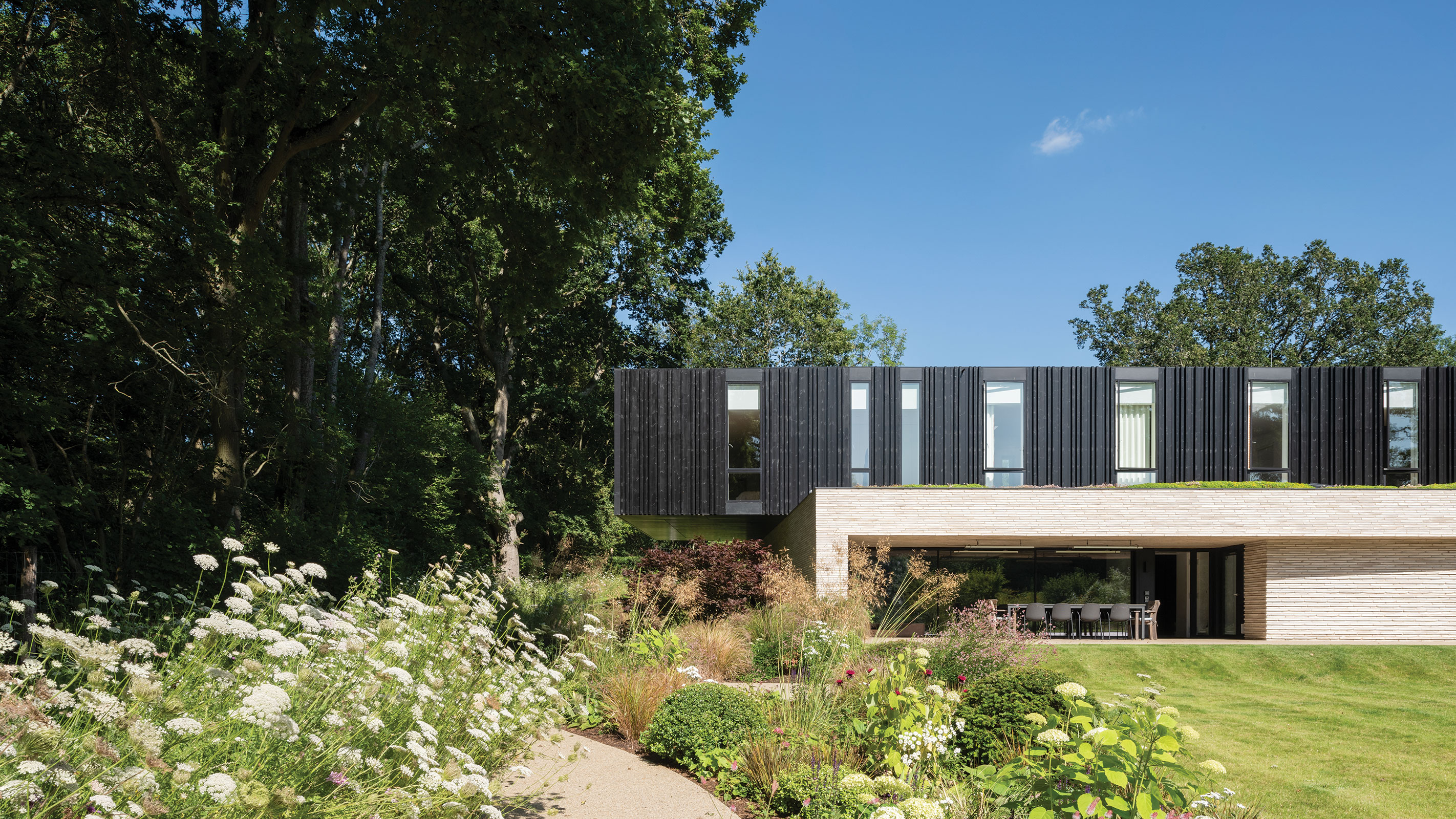
Even though you might want to take a contemporary approach to your brickwork, it still pays to acknowledge your surroundings and the area in which you are building — very often this is where the most inspiration can be found.
The design of this beautiful self build, by Ayre Chamberlain Gaunt, drew inspiration from the old brickworks and clay pits that are located nearby and features pale-coloured long-format bricks which form a reassuringly solid base for the slatted timber cladding of the first floor.
2. Mix and match bonds
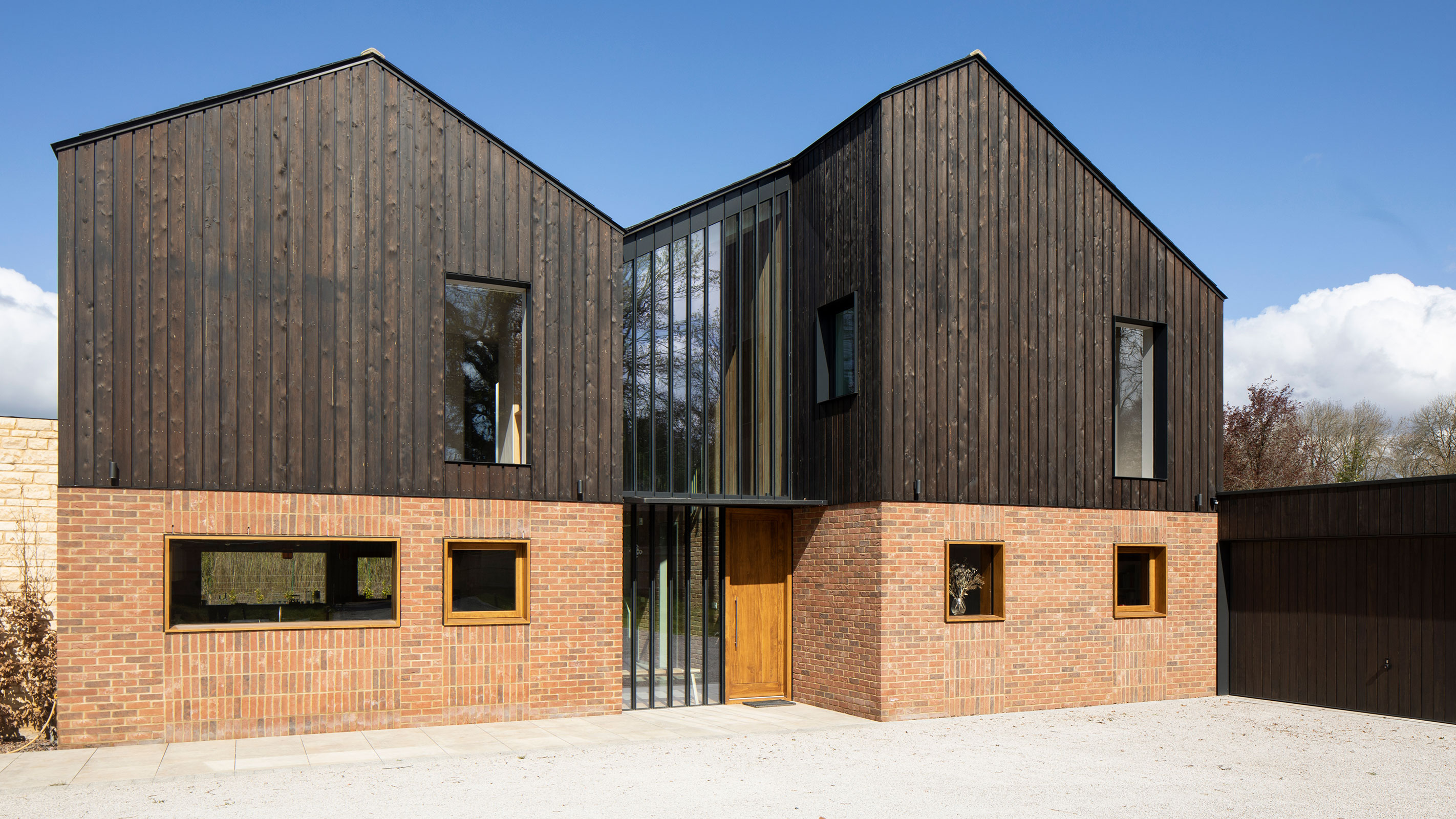
Very often, contemporary design is all about throwing out the rulebook and nowhere is this more true than when it comes to cladding a house and, in particular, the choice of brickwork.
Don't feel you have to work within the constraints of just one type of bond — instead, explore the idea of using several together over one elevation.
This self build, designed by Edgley Design, features standard clay bricks that have been laid in a traditional stretcher bond as well as in a vertical stack bond beneath and above the window openings.
3. Fully embrace the warm beauty of brick
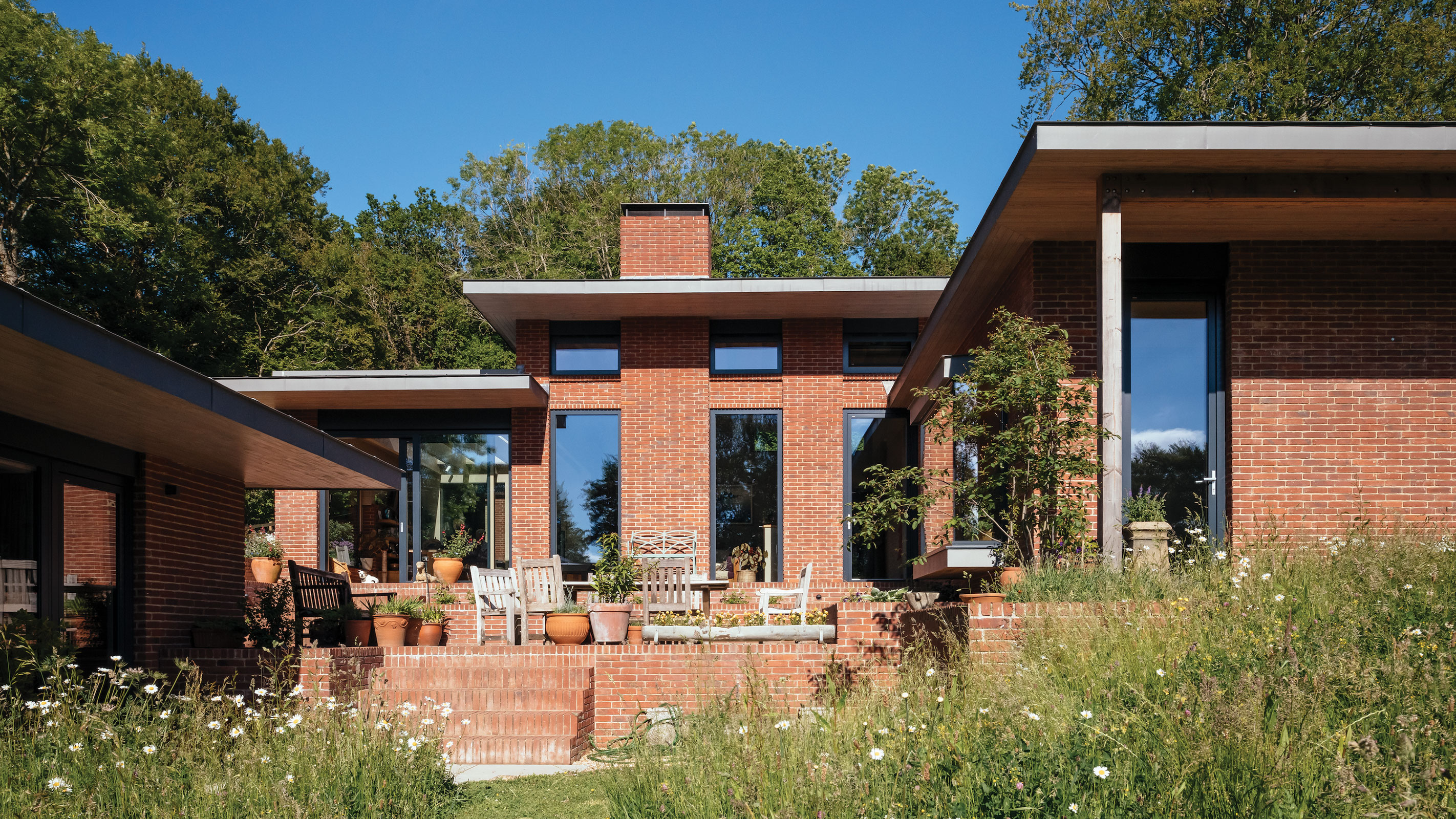
The warmth and character that bricks can add to a building is undeniable and this can be invaluable when ensuring that contemporary style self builds and extensions, however modern in their form, look natural in their surroundings.
This low-lying courtyard house, designed by PAD Studio, was built to replace a dark Victorian cottage.
The architects were keen to give a nod to the local red brick vernacular and so Danish bricks in a similar shade were chosen to "add a feeling of crafted texture and solidity." This brickwork has been left exposed internally, where it sits in contrast to oak panelling.
4. Create a 3D effect with staggered brickwork
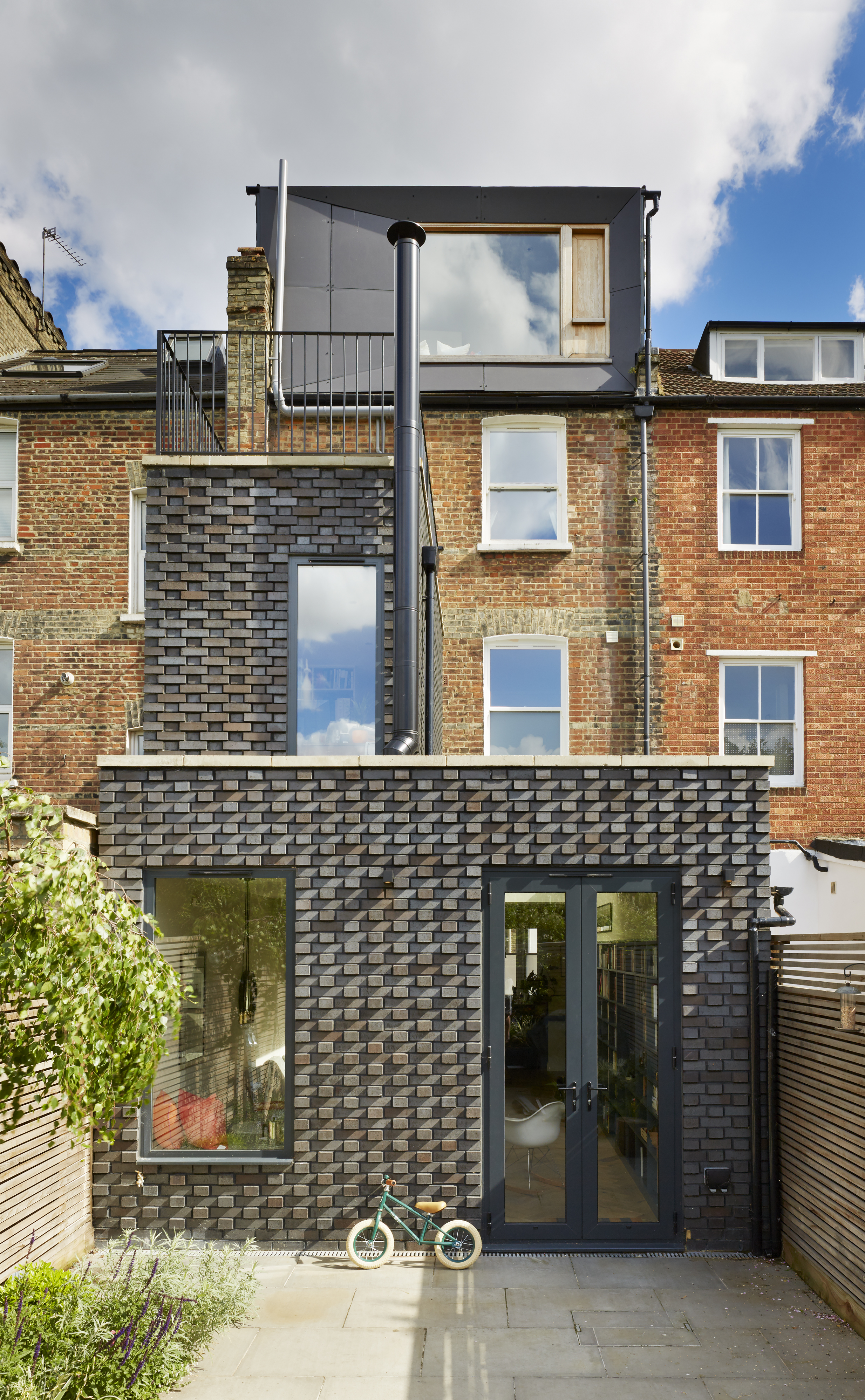
Laying bricks in unusual patterns can lead to some really eye-catching effects — ideal for those building an extension who might be keen to create a sense of evolution when it comes to the design of their home.
For this two storey, staggered extension, textured brickwork was used. At ground floor the engineered black headers of the Flemish bond brickwork cast varying shadows throughout, while at first floor they are recessed to create a woven structure. It is a very simple and cost-effective way of achieving maximum impact.
5. Use brickwork to tie in a cottage extension
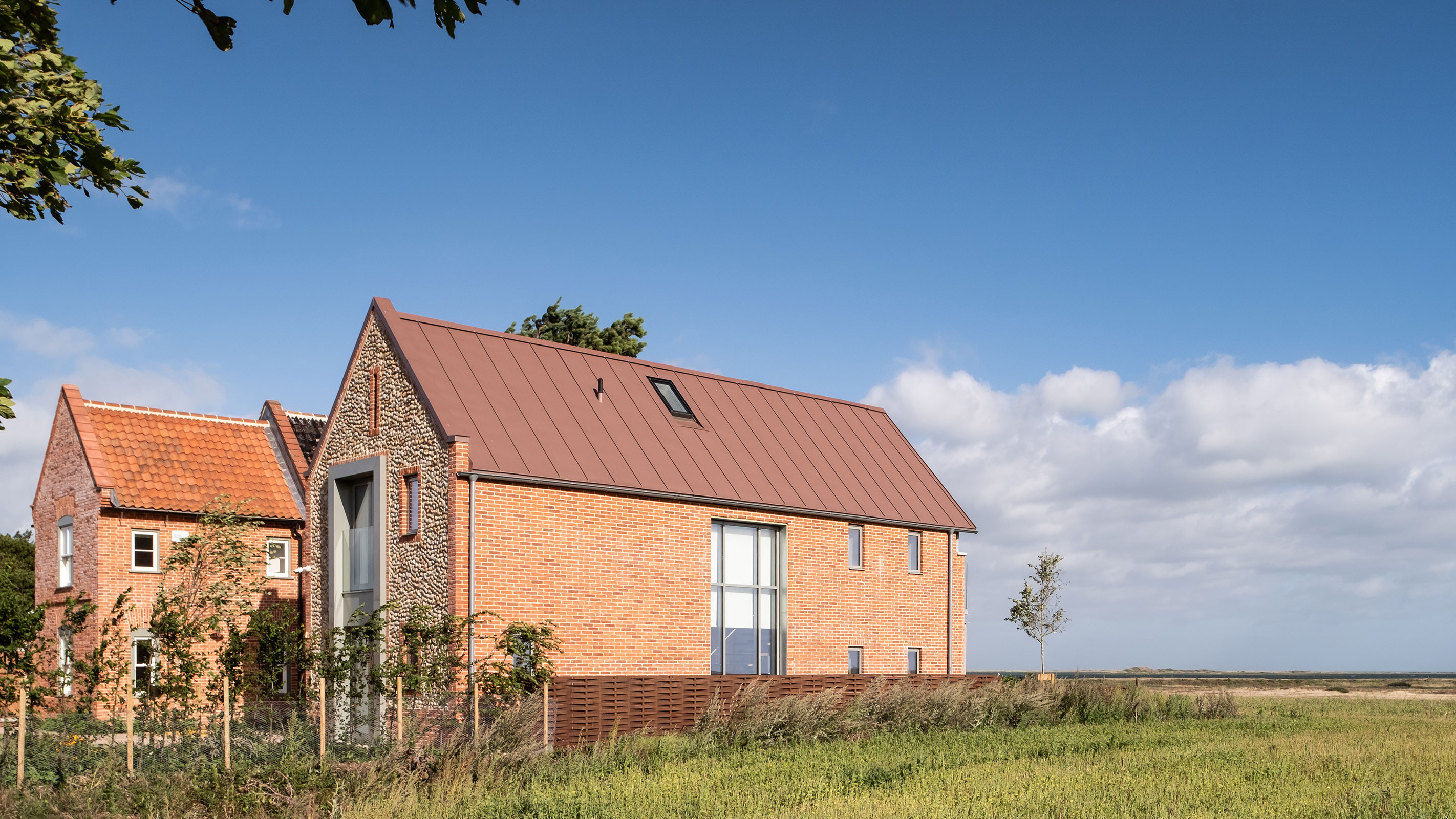
If you like the idea of creating a modern cottage extension but are keen that it still ties in architecturally with your existing home, then your choice of brickwork can be the ideal starting point.
The owners of this once run-down cottage decided to add an entire barn-style wing to the existing building, mirroring the outline and proportions of the cottage. It has been clad with brick and flint and finished off with a pigmented zinc roof.
6. Take a sideways approach to your brickwork
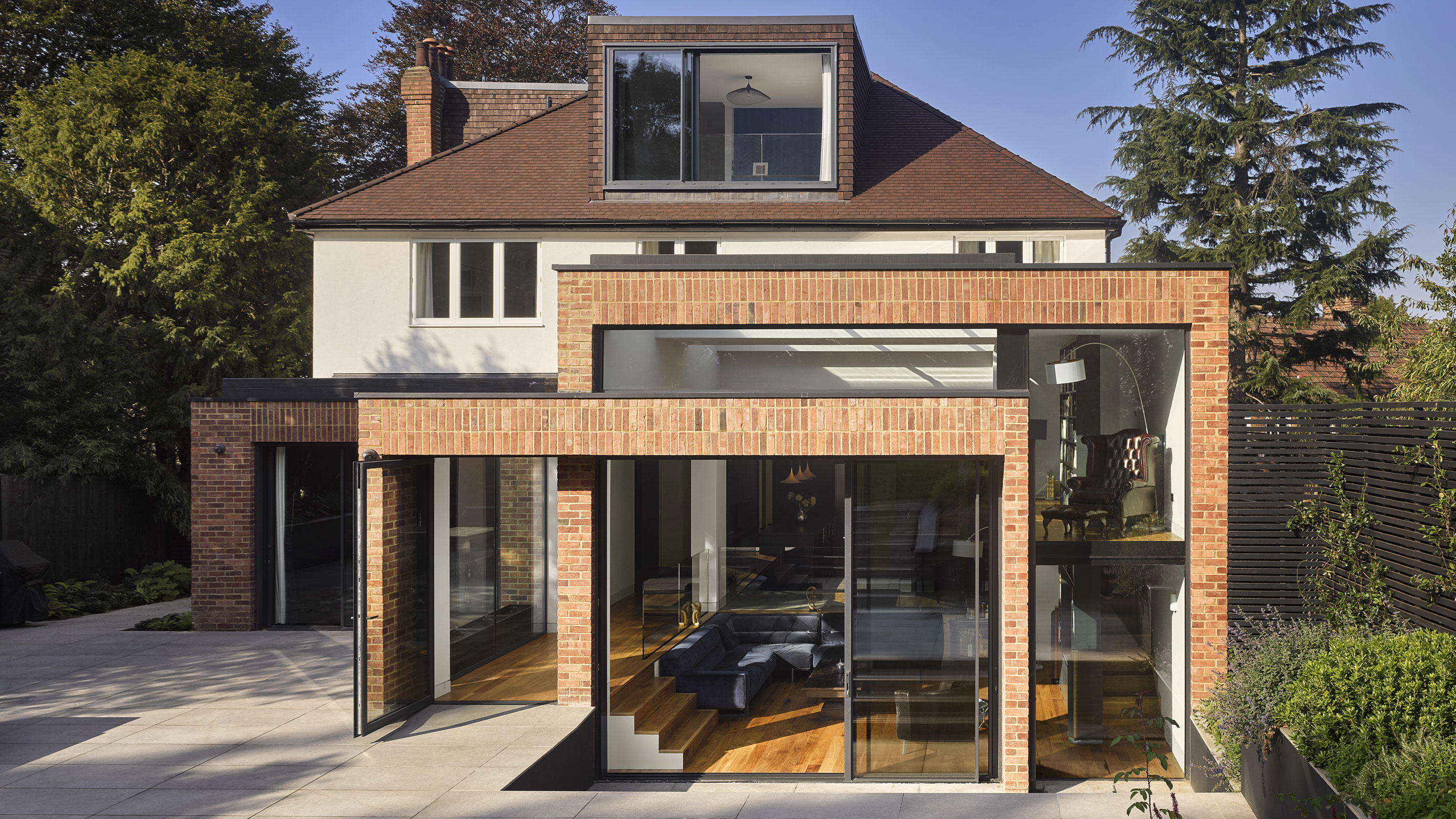
A popular way to create a more contemporary feel with brickwork is to use a vertically stacked laying pattern as opposed to the more commonly seen horizontal bonds — or, even better, to combine the two.
This interesting staggered extension, designed by Mulroy Architects, has been set over a number of levels, with a sunken living area. The brickwork used to clad the new addition was laid in a vertically stacked bond, with a horizontal pattern used for the upright elements of the walls.
7. Use traditional materials in a modern way
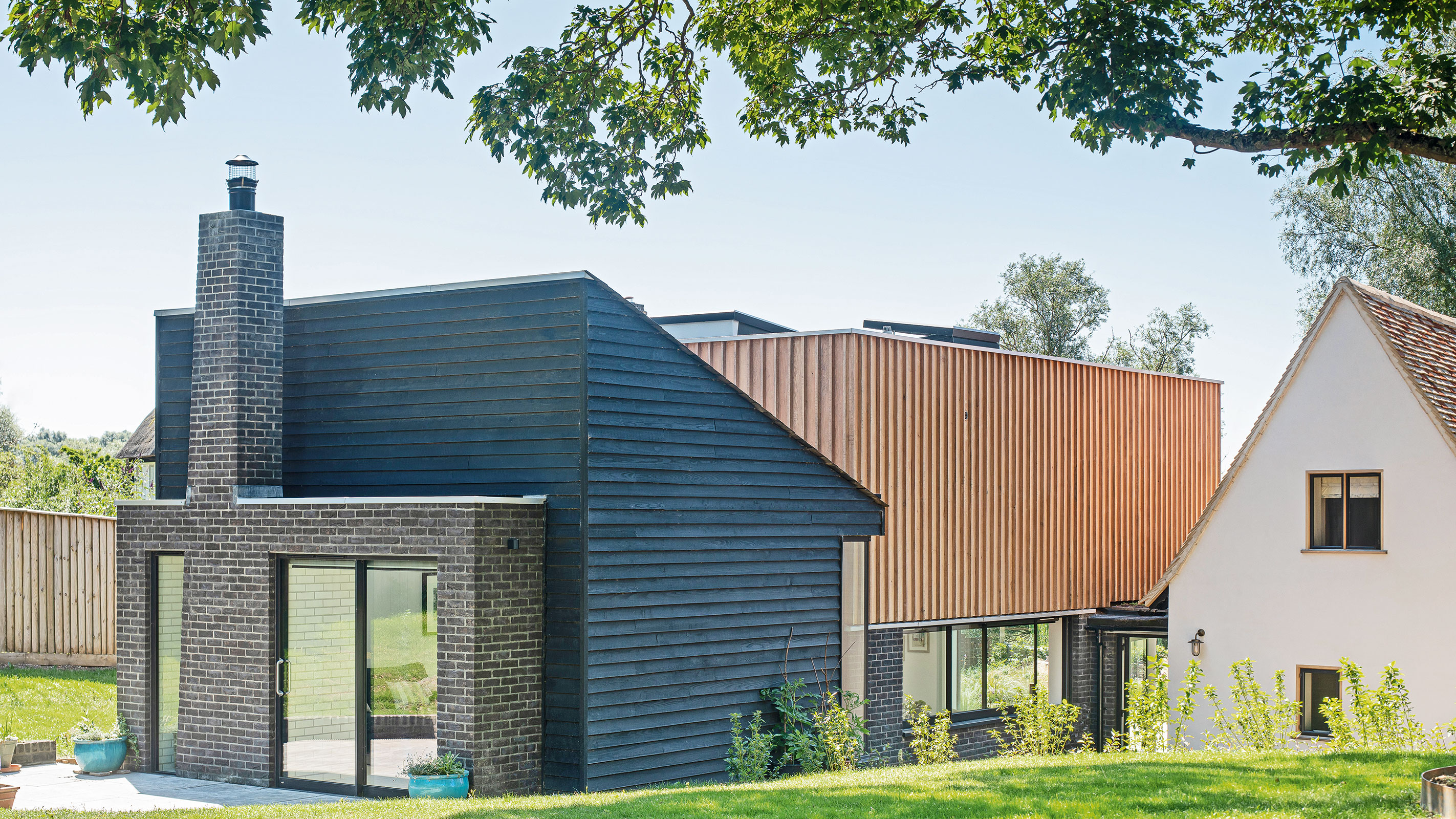
Cottage extensions are notoriously difficult to get right and this can be made even tricker in the case of those that are listed.
The owners of this newly extended cottage, built in the 17th century, faced a whole host of challenges, including the fact that it was Grade II listed and classed as a building at risk.
They decided to take on the hugely ambitious project, with the help of Mole Architects, to build a new extension that linked with the old property, the idea being that they would renovate the original cottage to retain its 17th-century identity while also making it completely usable as traditional room spaces for work, leisure and guests and also to increase the size of the cottage in a contemporary way.
“It was clear the materials needed to reflect those of the original house, so the oak frame of the original cottage has been matched by the oak cladding on the new extension,” says architect Ian Bramwell. “Even though the form is different, there’s still a resonance there with the materials.”
A variety of cladding materials have been used, including modern blue grey bricks for the elevation featuring the striking chimney stack.
8. Consider brickwork as a way of visually expanding a house
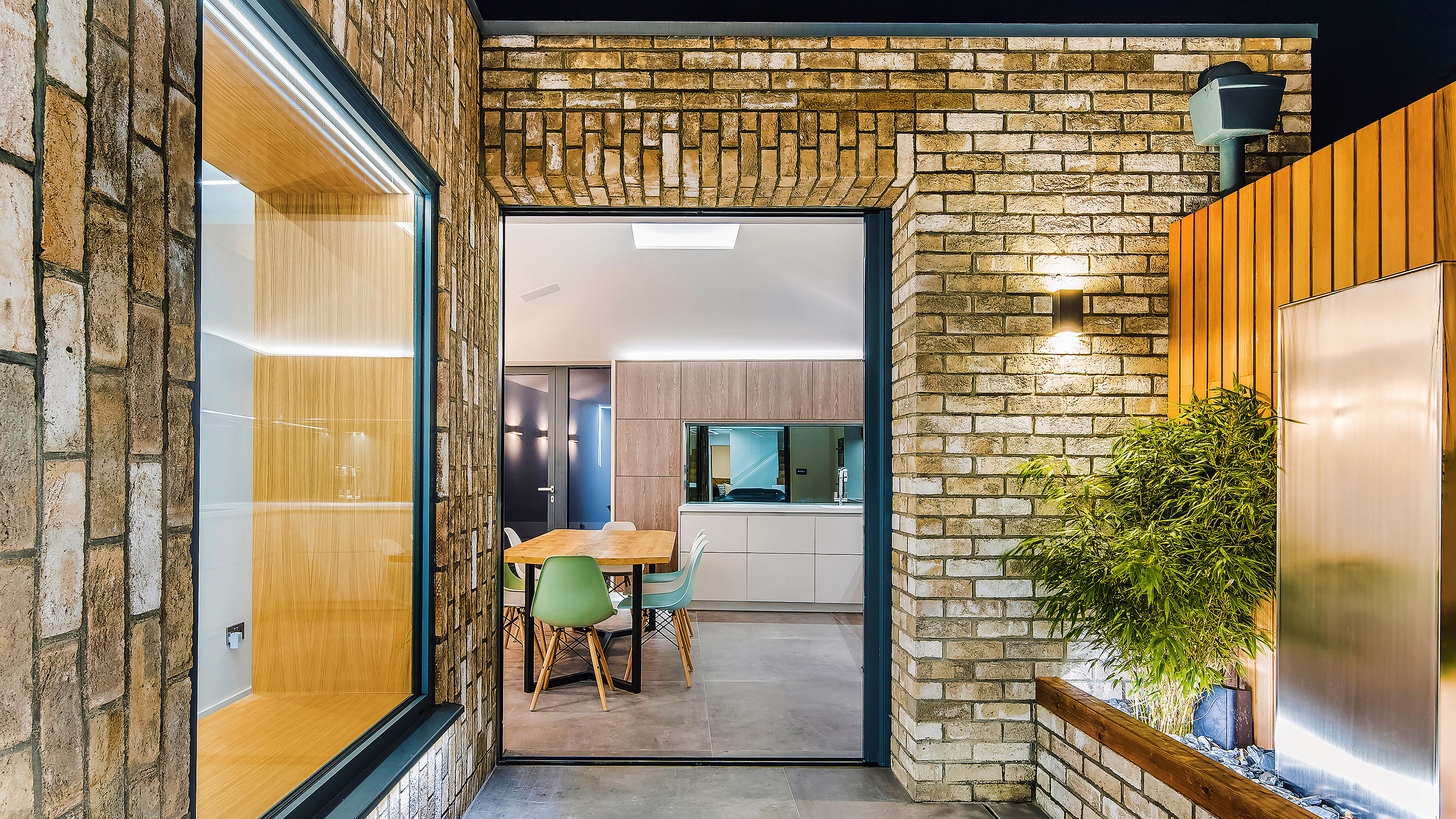
Sometimes brickwork can be used to make a small house feel bigger than it really is, drawing the eye towards interesting features and focal points and away from the proportions of the building.
This house was built to fit on to a tiny plot of just 130m2 located in a conservation area in London. Having looked at many different build systems, the owners settled on traditional brick due to the complex shapes required. Within the courtyard, shown here, bricks have been laid in both vertical and horizontal bonds for a 3D effect.
9. Choose a 'monk' brick bond for a striking effect

The bond in which bricks are laid has as much of an effect on the end appearance of a house as the bricks themselves.
A monk bond can work really well when it comes to contemporary house design. As a variant of the Flemish bond, a monk bond has two stretchers followed by a header repeated with overlapping midway courses above and below. The headers are centred over the join between the two stretchers in the course below.
The local handmade bricks on this Nash Baker Architects-designed self build were laid in a monk brick bond for a contemporary take on a traditional aesthetic. White iron-free sand lime mortar was also used to create a more distinctive look.
10. Use brick slips for a modern extension
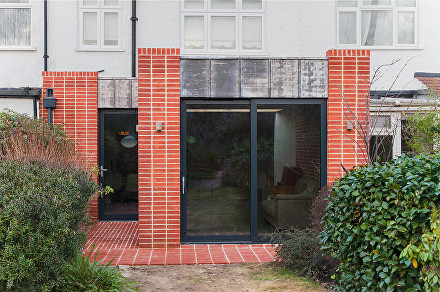
Using brick slips is a great way to finish off a timber frame extension or self build.
"A brick slip is a thin slice of brick; it can be either made this way or cut from the face of a full-sized brick," explains Joe Burton, brand director of Brick Tile Company. "Essentially as the 'face' of the brick is cut off to create a tile, you only use the bit you see, brick slips are there to provide the look without the structural aspect of full bricks."
This stunning timber frame extension (by Nimtim Architects) was clad in a narrow red brick using a stack bond with a light, recessed mortar to highlight the geometry of the design.
The brick cladding was also used internally in the kitchen and living spaces for an extra addition of contemporary warmth.
11. Choose a shade of brick to create an impact
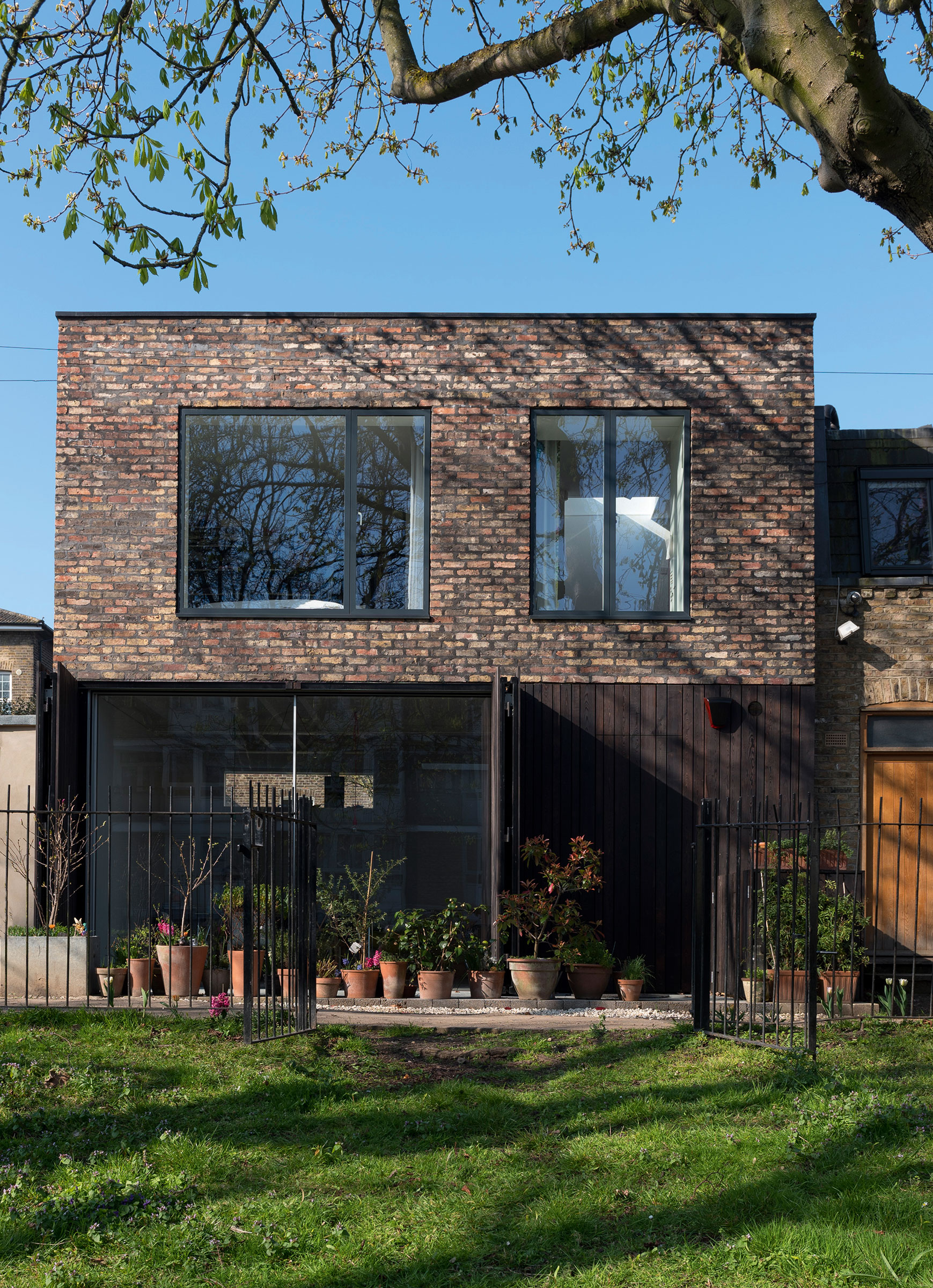
Choosing a bolder shade of brick, such as a blue or dark grey, is a great way to add wow and architectural interest to a modern house.
The local planners made it clear that the owners of this self build should build using brick.
“We then did a lot of research into the bricks we wanted and looked at black, purple and grey reclaimed bricks as we wanted to create something different – not a London stock brick – and chose reclaimed bricks which were uneven in size and colour, and used black mortar instead of cream," they say. "It was also important to us to use real bricks and not brick slips, which I think just looks like decorative cladding.”
12. Create a clear definition between old and new
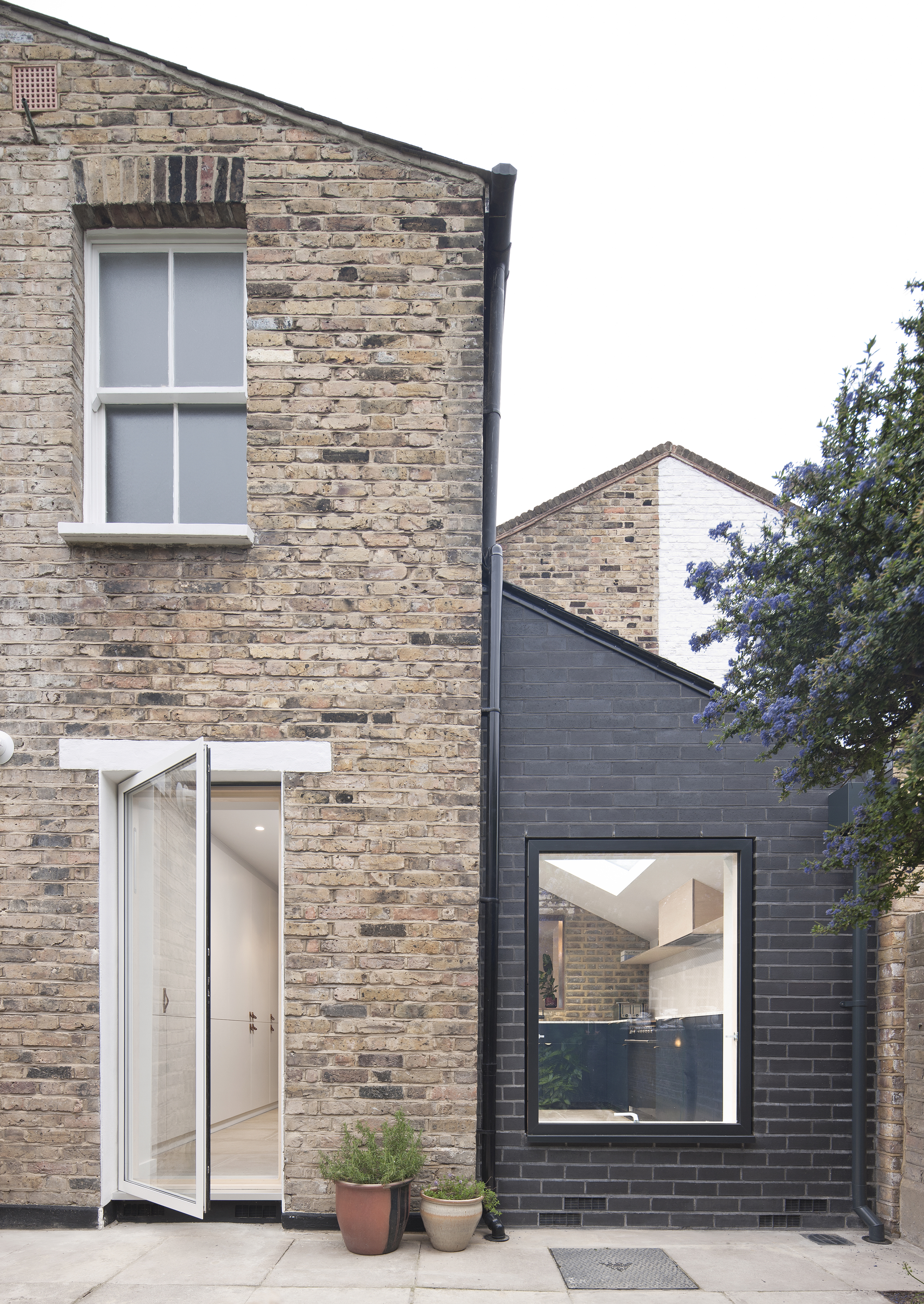
While choosing matching materials for an extension can sometimes be the only option in the eyes of the planners, if not then using a totally different shade of brick to that used on the original house can be a fantastic way to visually chart the evolution of the building.
For this striking side extension, despite being able to source matching bricks to the original house, Stuart Archer (of Archer and Braun Architects) chose a contemporary contrast for his side-return extension. Inexpensive Ibstock Atlas bricks were used for their consistent, smooth appearance.
13. Play around with pattern
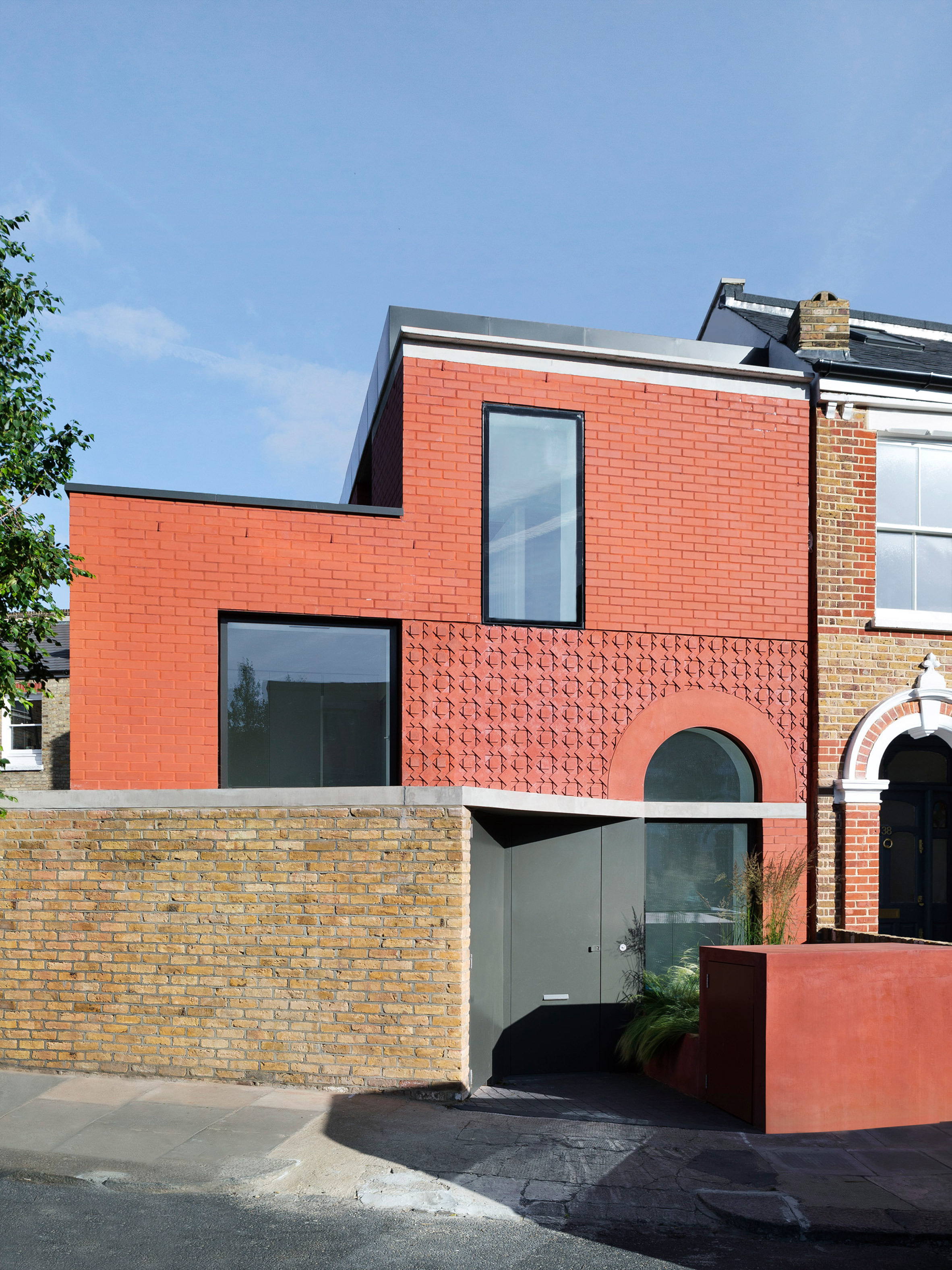
It can be really nice to use brick in the design of a new house to mirror some details of the brick detailing of the surrounding properties.
This new home, with its dramatic homogenous red-brick facade, was designed by 31/44 Architectsand reflects the period details and motifs seen on the adjacent houses, but in a more distinctive, modern way. The vivid shade of the bricks give the property its name — Red House.
14. Conjure up interesting shadows with brickwork
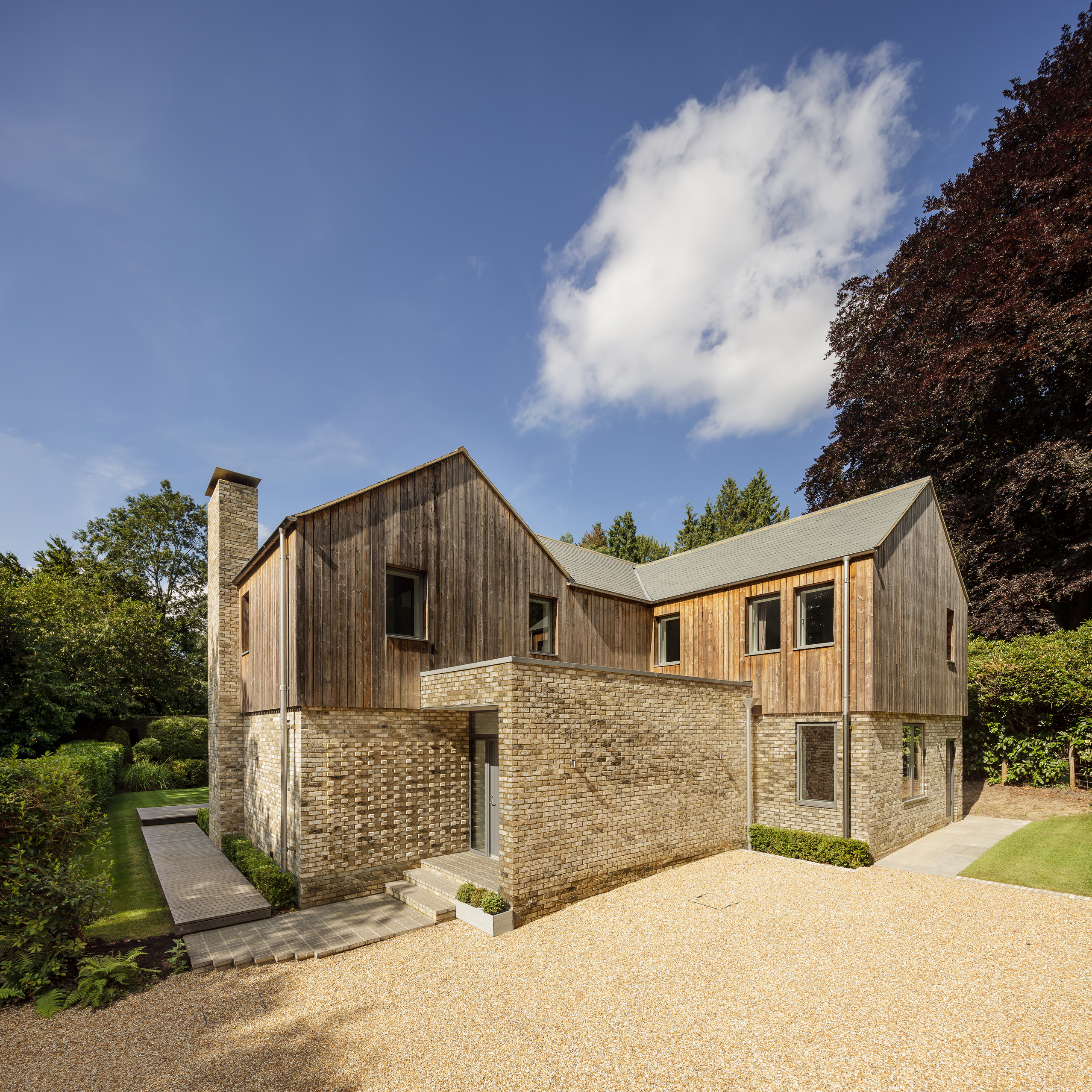
With careful planning, research and design, brickwork can be used to create all kinds of interesting effects — perfect when building a modern home or extension.
Within the design of this new house, by Vint & Smith Architecture + Design, both pale timber cladding and a combination of white and grey bricks have been used. The way in which the materials have been used is a great example of how bricks can really elevate a façade, creating shadows and texture.
The weathered grey and white bricks are from BEA Clay Solutions.
15. Stretch the imagination with long bricks
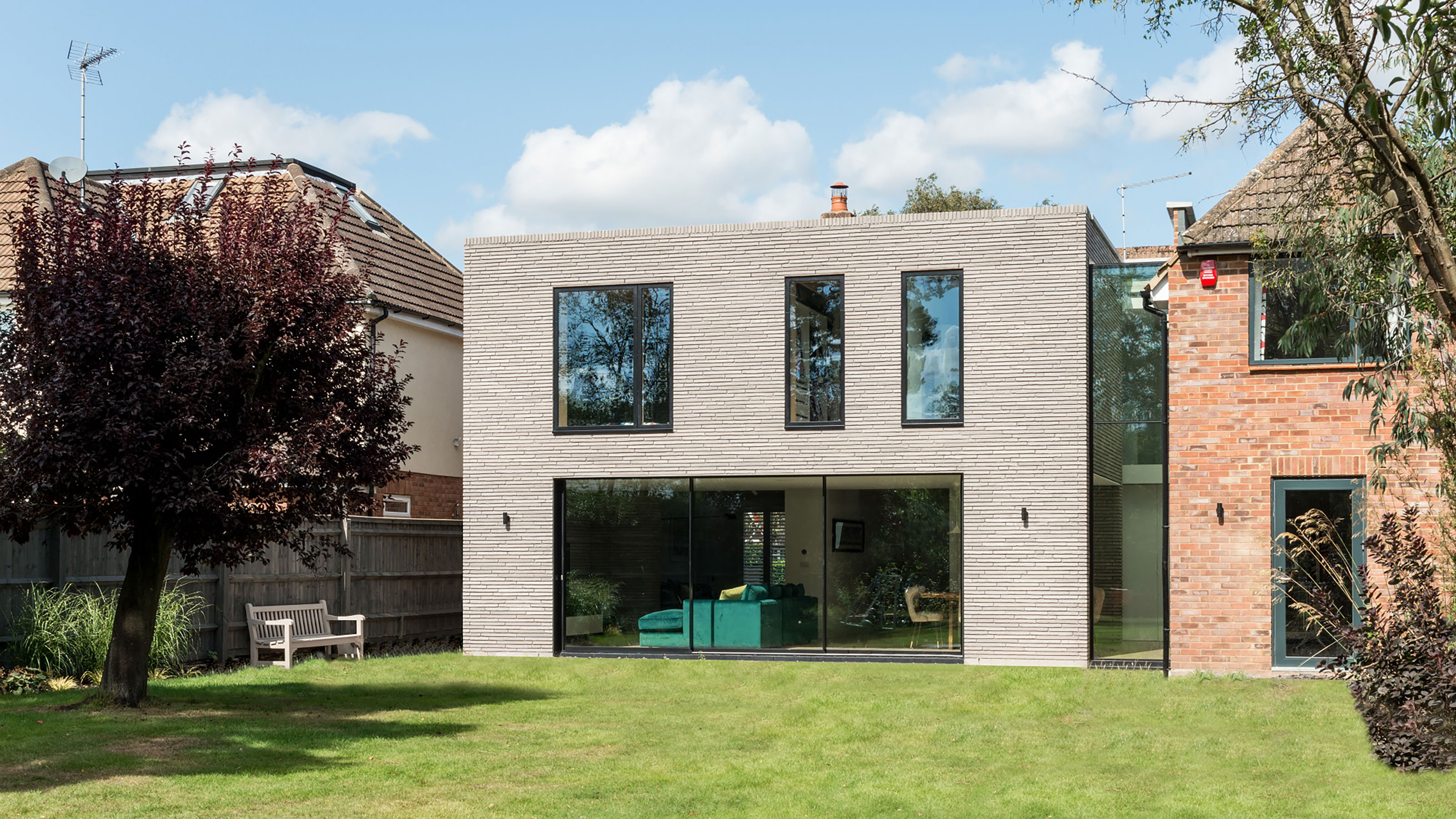
Longer-than-standard bricks are the perfect choice for those looking to create a sleek, eye-catching home or extension.
This stunning two storey extension, designed by Bradley VanDerStraeten, has been constructed using beautiful long grey bricks. Despite the complete contrast between the modern, pale bricks of the new addition and the more traditional red brick used on the existing house, the two sit happily side-by-side thanks to the double-height glass link that joins them together.
Get the Homebuilding & Renovating Newsletter
Bring your dream home to life with expert advice, how to guides and design inspiration. Sign up for our newsletter and get two free tickets to a Homebuilding & Renovating Show near you.
Natasha was Homebuilding & Renovating’s Associate Content Editor and was a member of the Homebuilding team for over two decades. In her role on Homebuilding & Renovating she imparted her knowledge on a wide range of renovation topics, from window condensation to renovating bathrooms, to removing walls and adding an extension. She continues to write for Homebuilding on these topics, and more. An experienced journalist and renovation expert, she also writes for a number of other homes titles, including Homes & Gardens and Ideal Homes. Over the years Natasha has renovated and carried out a side extension to a Victorian terrace. She is currently living in the rural Edwardian cottage she renovated and extended on a largely DIY basis, living on site for the duration of the project.

